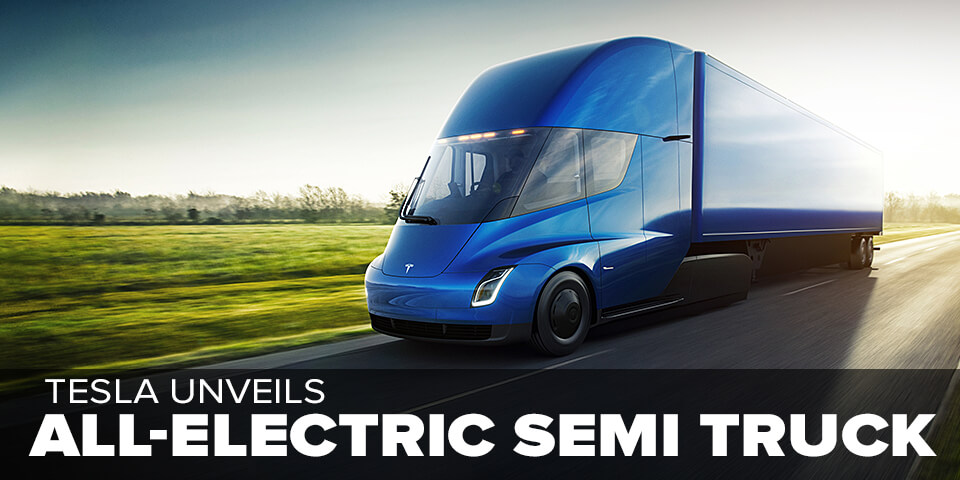Truck Topics

Tesla Unveils All-Electric Semi Truck
A few days before unveiling Tesla’s all-electric Class-8 truck, CEO Elon Musk tweeted that the truck “will blow your mind clear out of your skull and into an alternate dimension.”
Tesla Semi Truck unveil to be webcast live on Thursday at 8pm! This will blow your mind clear out of your skull and into an alternate dimension. Just need to find my portal gun ...
— Elon Musk (@elonmusk) November 12, 2017
Sure, that’s a lot of hype. But the November 16 event introducing the Tesla Semi didn’t disappoint. And, if Tesla delivers on the performance numbers it says the truck can achieve, the Semi could bring massive change to the transportation sector a lot sooner than many in the industry had expected.
That’s because it solves key challenges that have traditionally made all-electric heavy-duty trucks impractical for widespread market adoption.
And the biggest barrier has been battery range. But Tesla says that the Semi is capable of 500 miles of range, while fully loaded and at highway speeds. That distance accommodates a wide range of trucking applications, when you consider that nearly 80-percent of freight in the U.S. is moved less than 250 miles, according to U.S. Department of Transportation statistics.
What about charging?
Says Tesla: “Megachargers, a new high-speed DC charging solution, will add about 400 miles in 30 minutes and can be installed at origin or destination points and along heavily trafficked routes, enabling recharging during loading, unloading, and driver breaks.”
What about autonomous driving?
The Semi will come standard with Enhanced Autopilot—similar to the system that’s currently on the Tesla Model S and Model 3 sedans and the Model X SUV—featuring Automatic Emergency Braking, Automatic Lane Keeping, Lane Departure Warning, and event recording. While Tesla’s Autopilot is highly advanced, it’s not capable of full autonomy … yet.
There is also a system on the truck that prevents jackknifing, using onboard sensors that detect instability and react with positive or negative torque to each wheel, while actuating the brakes, as needed—all without input from the driver.
So, how much will the Semi cost?
Musk didn’t give an overall price estimate at the event. Instead, he spoke in terms of cost of ownership. As the company puts it, “with the low and stable nature of electricity prices—which average $0.12/kWh in the U.S. and can be significantly less for commercial and industrial users, falling to almost nothing when combined with local solar generation and storage—owners can expect to gain $200,000 or more in savings over a million miles based on fuel costs alone.”
Tesla is accepting reservations for the Semi for $5,000. But you’ll need to wait at least two years to get it, with production expected to begin in 2019. And if the current delays with Model 3 production are an indicator, expect to wait a little longer.
